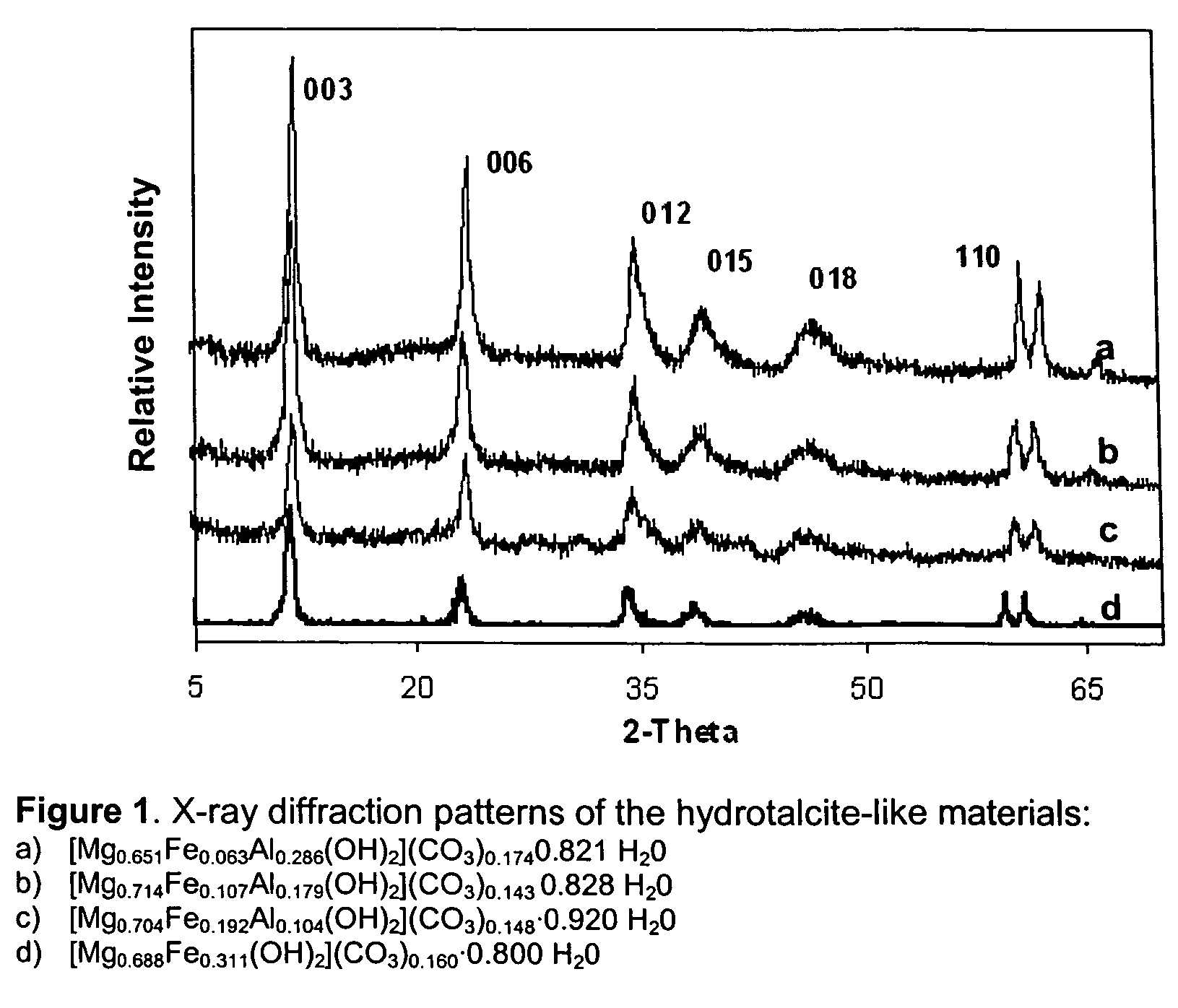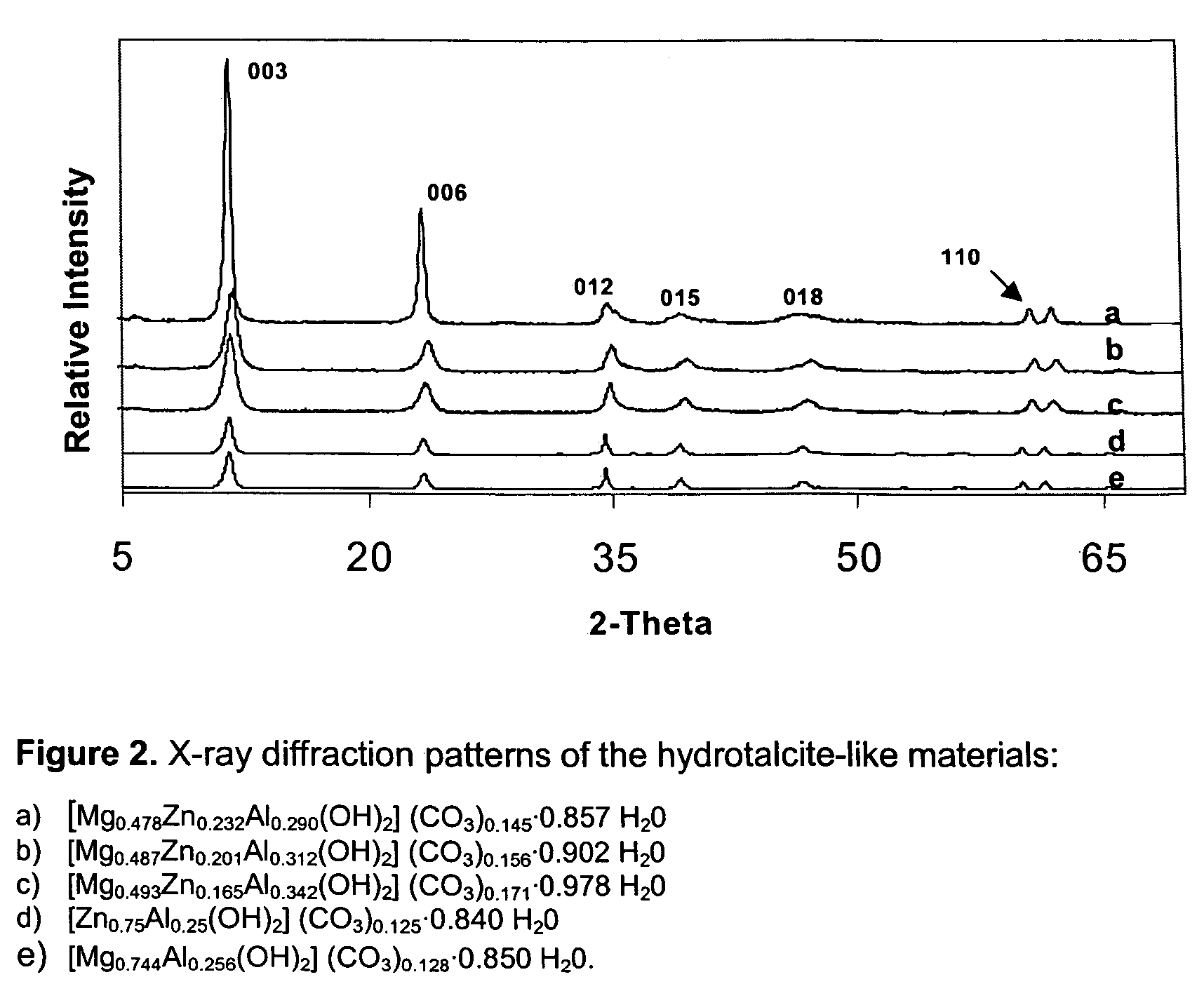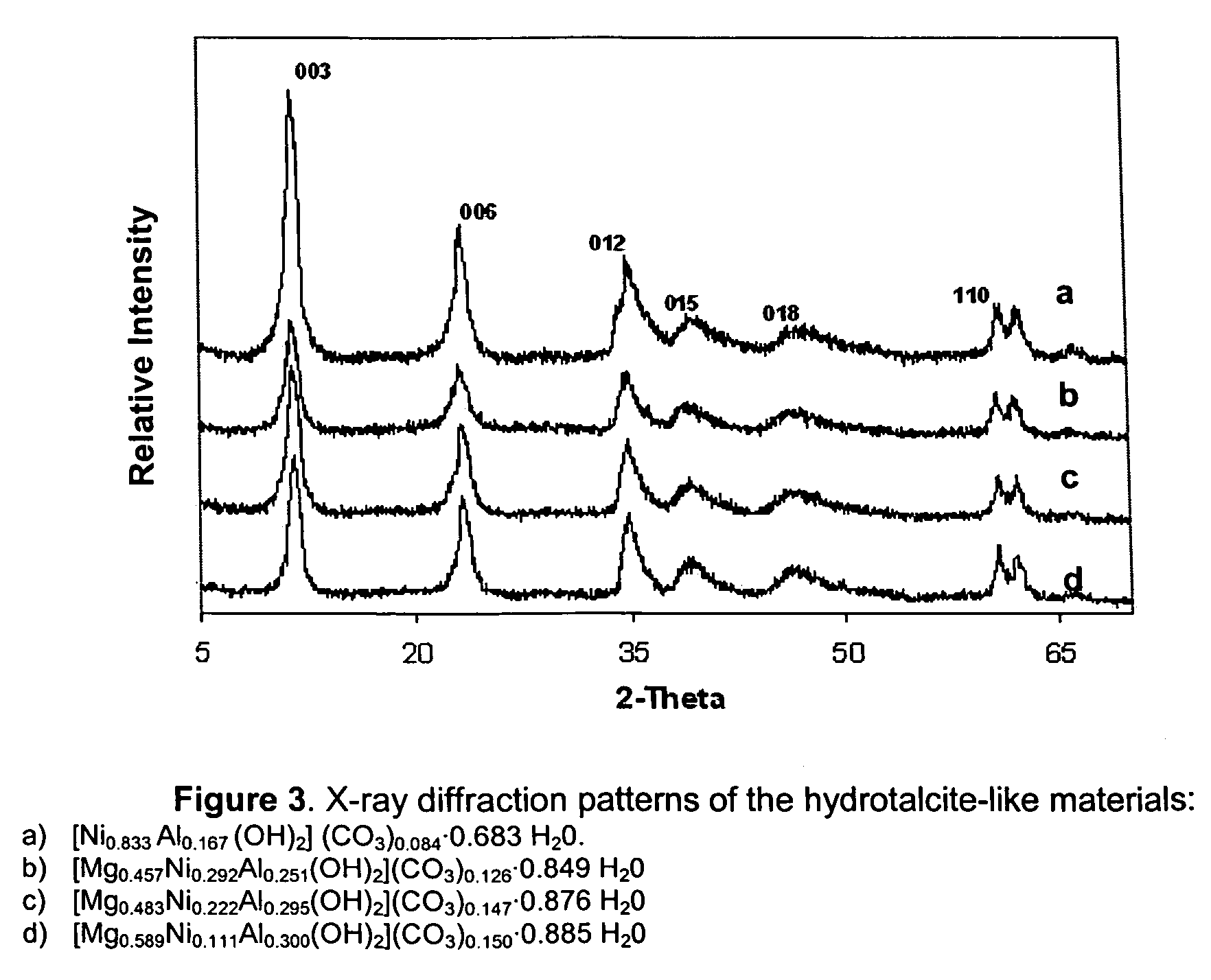Obtaining multimetallic oxides derived from hydrotalcite type compounds
a multimetallic oxide and hydrotalcite technology, applied in the direction of zinc oxide/hydroxide, cadmium sulfide, silver compounds, etc., can solve the problems of general limited absorption capacity, slow regeneration speed, and rapid loss of activity, so as to improve absorption speed and regeneration speed, and improve sox absorption capacity
- Summary
- Abstract
- Description
- Claims
- Application Information
AI Technical Summary
Benefits of technology
Problems solved by technology
Method used
Image
Examples
example 1
[0088]Obtaining the hydrotalcite with the developed formula [Mg0.714Fe0.107Al0.179(OH)2](CO3)0.143.0.828H2O, was carried out in the following manner: First an aqueous solution (A) was prepared with 49.06 g of Mg (NO3)2.6H2O, 13.28 g of Al(NO3)3.9H2O and 11.49 g Fe(NO3)3.9H2O in 250 cm3 water. Meanwhile, an alkaline solution was prepared (B), containing 23.27 g of K2CO3 and 22.00 g of KOH in 250 cm3 of water. The (A) solution was added to a glass reactor, the (B) solution began to drip slowly until it reached a final pH of 9. The solution obtained was kept under mechanical stirring at a temperature of 353K during 18 hours. Afterwards, the precipitate obtained was washed and filtered with hot de-ionized water (333-353K) during enough time to eliminate excess ions. Drying was performed at a temperature of 373 K during 24 h.
example 2
[0089]Synthesis of [Mg0.704Fe0.192Al0.104(OH)2](CO3)0.148.0.920H2O. An aqueous solution (A) was prepared with 49.06 g of Mg(NO3)2.6H2O, 7.50 g of Al(NO3)3.9H2O and 17.77 g of Fe(NO3)3.9H2O in 250 cm3 of water. On the other hand, an alkaline solution (B) was prepared, containing 23.27 g of K2CO3 and 22.00 g of KOH in 250 cm3 of water. Solution (A) was added to a glass reagent, solution (B) began to drip slowly until it reached a final pH of 9. The solution maintained was kept under vigorous mechanical stirring, at a temperature of 353 K for 18 hours. Afterwards, the precipitate obtained was washed and filtered with hot de-ionized water (353 K) during enough time to eliminate excess ions. Drying took place at a temperature of 373K during 24 h.
example 3
[0090]Synthesis of [Mg0.651Fe0.063Al0.286(OH)2](CO3)0.174.0.821H2O. An aqueous solution (A) was prepared with 98.12 g of Mg(NO3)2.6H2O, 37.47 g of Al(NO3)3.9H2O and 11.20 g of Fe(NO3)3.9H2O in 500 cm3 of water. Meanwhile, an alkaline solution (B) was prepared, containing 46.48 g of K2CO3 and 44.03 g of KOH in 500 cm3 of water. Solution (A) was added to a glass reagent; solution (B) began to drip slowly until it reached a final pH of 9. The solution obtained was kept under vigorous mechanical stirring, at a temperature of 353 K for 18 hours. Afterwards, the precipitate obtained was washed and filtered with hot de-ionized water (353 K) during enough time in order to eliminate excess ions. Drying took place at a temperature of 373K during 24 h.
[0091]Table 4 shows the texture properties of the synthesized compounds. FIG. 1 exhibits the diffraction patterns of these solids, which correspond to a hydrotalcite type structure.
[0092]
TABLE 4Developed formula and textural properties of HT's.BE...
PUM
| Property | Measurement | Unit |
|---|---|---|
| temperature | aaaaa | aaaaa |
| temperature | aaaaa | aaaaa |
| temperatures | aaaaa | aaaaa |
Abstract
Description
Claims
Application Information
 Login to View More
Login to View More - R&D
- Intellectual Property
- Life Sciences
- Materials
- Tech Scout
- Unparalleled Data Quality
- Higher Quality Content
- 60% Fewer Hallucinations
Browse by: Latest US Patents, China's latest patents, Technical Efficacy Thesaurus, Application Domain, Technology Topic, Popular Technical Reports.
© 2025 PatSnap. All rights reserved.Legal|Privacy policy|Modern Slavery Act Transparency Statement|Sitemap|About US| Contact US: help@patsnap.com



